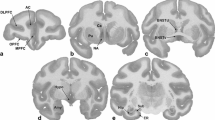Abstract
Dextrorphan is a noncompetitive blocker of N-methyl-D-aspartate (NMDA) receptors. Since NMDA blockers are known to reduce the locomotor stimulatory and toxic effects of cocaine, it was speculated that dextrorphan would attenuate cocaine-induced behavioral excitatory motor activity associated with and without mechanical perturbation of the brainstem.
Technique: Motor activity was recorded following dextrorphan and/or cocaine challenge in 25 SHR rats. Ten were naive subjects. Mini-osmotic pumps delivering cocaine (2.5 mg/0.49 ul/hr) were placed in 15 subjects, and infusion was halted after the third infusion day. On the fifth day either a dextrorphan (25 mg/kg, subcutaneous) or a dextrorphan and cocaine (40 mg/kg, intraperitoneal) challenge was done. Ten rats had bipolar electrode implants in the bilateral brainstem. Five were treated with DC current lesions in each of 12 days over a 3-week period. The effects of brainstem lesions on escape behavior were also evaluated in those five subjects.
Results: In the naive subjects, dextrorphan reduced motor activity (P=.0001), whereas combined cocaine and dextrorphan increased motor activity (P=0.04). In lesioned subjects, dextrorphan decreased motor activity (P=0.0001). In electrode implant subjects, combined dextrorphan and cocaine challenge decreased the motor activity (P=0.04). Hyperactivity in the electrode implant group was greater than in the lesioned subjects. Midbrain electrolytic lesions attenuated escape behavior. A variety of behaviors were produced by brainstem lesions.
Conclusions: Dextrorphan and brainstem lesions reduced motor hyperactivity and escape behavior. In electrode implant subjects dextrorphan counteracted the expected cocaine excitatory motor effects. Dextrorphan did not activate nor facilitate seizures.
Similar content being viewed by others
References
Akaike, N., and Himori, N. (1993) Antagonism of various tonic convulsions in mice by dextrorphan and dizocilpine.Naunyn-Schmiedebergs Archives of Pharmacology 347:652–657.
Aryanpur, J., Cole, Alison E., Eccles, Christine U., and Fisher, Robert S. (1990) Biphasic action of dextrorphan on penicillin induced bursting in rat hippocampal slice.Brain Research 519:65–72.
Feeser, H.R., Kadis, J.L., and Prince, D.A. (1988) Dextromethorphan, a common antitussive, reduces kindled amygdala seizures in the rat.Neuroscience Letters 86:340–345.
Fleischmann, A., Vincent, P.A., and Etgen, A.M. (1991) Effects of non-competitive NMDA receptor antagonists on reproductive and motor behaviors in female rats.Brain Research 568:138–46.
Leander, J.D., Rathbun, R.C., and Zimmerman, D.M. (1988) Anticonvulsant effects of phencyclidine-like drugs: Relation to N-methyl-D-aspartic acid antagonism.Brain Research 454:368–372.
Pellegrino, L.J., and Cushman, A.J. (1967)A stereotaxic atlas of the rat brain. New York: Appleton-Century-Crofts.
Qian, X.B., Andy, O.J., Dearman, C., Andrews, M., and Rockhold, R.W. (1992) Cocaine-induced brainstem seizures and behavior.Integrative Physiological and Behavioral Science 27:117–129.
Rockhold, R.W., Surrett, R.S., Oden, G., Acuff, C.G., Zhang, T., Farley, J.M., Hoskins, B., and Ho, I.K. (1992) Inhibition of cocaine intoxication by excitatory amino acid receptor antagonists. Annals of the New York Academy of Sciences 648:335–337.
Rockhold, R.W., Oden, G., Ho, I.K., Andrew, M., and Farley, J.M. (1991) Glutamate receptor antagonists block cocaine-induced convulsions and death.Brain Research Bulletin 27:721–723.
Tortella, F.C., Ferkany, J.W. and Pontecorvo, M.J. (1988) Anticonvulsant effects of dextrorphan in rats: Possible involvement in dextromethorphan-induced seizure protection.Life Sci. 42: 2509–2514.
Author information
Authors and Affiliations
Rights and permissions
About this article
Cite this article
Lundien, M., Andy, O.J., Rockhold, R.W. et al. Dextrorphan effects on cocaine and brainstem perturbation. Integrative Physiological and Behavioral Science 31, 224–230 (1996). https://doi.org/10.1007/BF02691453
Issue Date:
DOI: https://doi.org/10.1007/BF02691453




